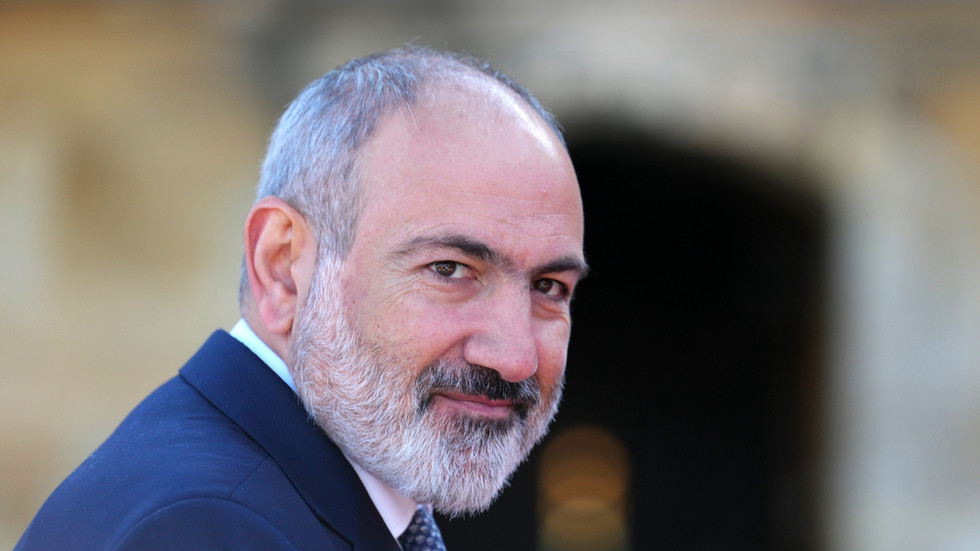The administration of United States President Donald Trump has unveiled its new artificial intelligence action plan, which includes a strategy it says will boost the US standing in AI as it competes with China for dominance in the rapidly growing sector.
The White House released the 25-page “America’s AI Action Plan” on Wednesday.
It includes 90 different policy proposals that the administration says will increase AI tools for allies around the globe. It will also promote production of new data centres around the US. It will scrap federal regulations that “hinder AI development”, although it is not clear which regulations are in question.
In a statement, US Secretary of State Marco Rubio said the plan will “ensure America sets the technological gold standard worldwide, and that the world continues to run on American technology”.
The president is expected to announce a series of executive orders which will outline key parts of the plan around 5pm in New York (21:00 GMT).
“We believe we’re in an AI race … and we want the United States to win that race,” White House AI czar David Sacks told reporters on Wednesday.
The White House says the plan will “counter Chinese influence in international governance bodies” and also will give the US more control over exports of AI technology.
However, the administration did not offer any details on how it plans to do that.
The plan outlined by the Trump administration will also include a framework to analyse models built by China to assess “alignment with Chinese Communist Party talking points and censorship”.
Free speech in the spotlight
The plan says that it will also uphold free speech in models that will allow systems to be “objective and free from top-down ideological bias” for organisations wanting to do business with the federal government.
A senior White House official said the main target was AI models that consider diversity and inclusion, according to The Wall Street Journal, which, experts say, signals the concern is the government’s perceived liberal bias as opposed to an overall bias.
“The government should not be acting as a Ministry of AI Truth or insisting that AI models hew to its preferred interpretation of reality,” Samir Jain, vice president of policy at the Center for Democracy & Technology, said in a statement provided to Al Jazeera.
“The plan is highly unbalanced, focusing too much on promoting the technology while largely failing to address the ways in which it could potentially harm people.”
Conservatives have long accused AI chatbots of having a liberal bias, comparable to their comments on legacy media for providing critical coverage of the administration. However, it comes as users of GrokAI, former Trump ally and right-wing tycoon Elon Musk’s AI platform, have accused it of having a right-wing lean. Musk’s X AI is part of a $200m package with the Pentagon that has other AI companies, including OpenAI.
Building out data centres
A key focus of the new plan will be to build out new data centers for AI technology as the industry rapidly expands. The administration said that will include streamlining permits for new centre development and the energy production facilities used to power these data centres.
The plan sidesteps environmental concerns that have been a major criticism of the AI industry. AI “challenges America to build vastly greater energy generation than we have today”, the plan said.
AI data centres have been tied to increased power consumption and, in turn, greenhouse gas emissions. According Google’s 2024 sustainability report, there was a 48 percent increase in power greenhouse gas emissions since 2019 which, it says, will only become more prevalent.
“This result was primarily due to increases in data center energy consumption and supply chain emissions. As we further integrate AI into our products, reducing emissions may be challenging due to increasing energy demands from the greater intensity of AI compute, and the emissions associated with the expected increases in our technical infrastructure investment,’ the report said.
The streamlining of permits also comes as the US Environmental Protection Agency (EPA) plans to reverse its scientific determination that greenhouse gas emissions endanger public health. That change would remove the legal framework that climate regulations are based on, the Reuters news agency has reported, citing two unnamed sources.
The reversal would remove the “endangerment finding”, making it easier for the EPA to undo legislation limiting greenhouse gas emissions on energy-producing facilities, including those used to power AI data centres.
The administration has created environmental review exceptions for data centre construction and will allow expanding access to federal lands for AI development.
“AI will improve the lives of Americans by complementing their work — not replacing it,” the plan says.
It, however, comes as employers across the country scrap jobs because of AI. Earlier this month, Recruit Holdings, the parent company of Indeed and Glassdoor, cut 1300 jobs which it directly attributed to AI.
In June, Salesforce CEO Marc Benioff said that AI is doing 30 to 50 percent of the company’s workload. In February, the tech giant laid off 1,000 employees.
Analysts say the plan looks promising for investors in the AI sector.
“This is a watershed moment in the AI revolution, and Trump recognises this AI arms race between the US and China. A big step forward,” Dan Ives, analyst at Wedbush Securities, told Al Jazeera.
As of 4pm in New York (20:00 GMT), stocks of AI-focused companies had mixed results. NVIDIA was up 2.1 percent; Palantir up 3.6 percent, Oracle up 1.5 percent and Microsoft was up 0.3 percent. On the other hand, Google’s parent company Alphabet was down 0.5 percent.

 7 hours ago
2
7 hours ago
2










 English (US) ·
English (US) ·